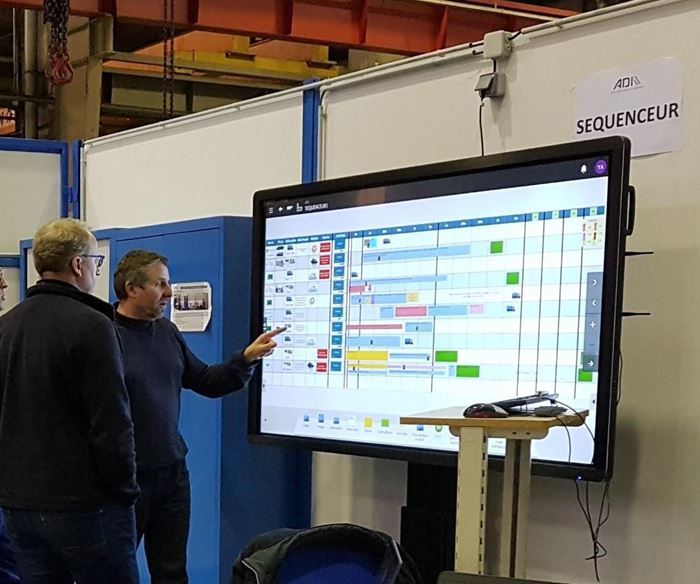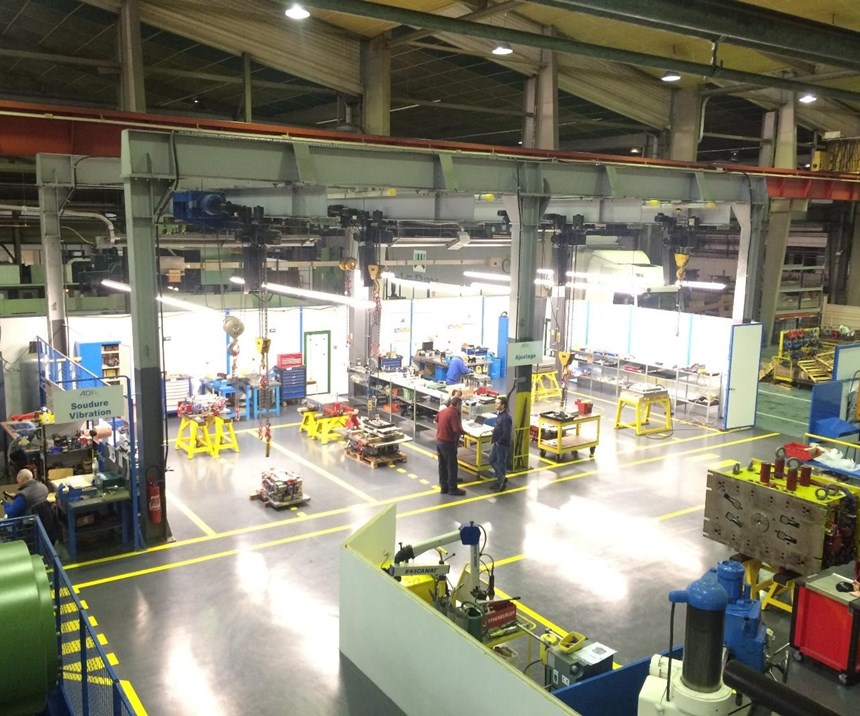Going Paperless with Digital Visual Management
Digital visual management is a software solution that provides one version of the truth for everyone in the shop.
Barbara Schulz has been our European correspondent for two years now giving readers a look at what's happening in mold manufacturing outside the United States. This has been a valuable, popular feature series, so when this story came across my desk about a French mold builder using digital visual management it was an easy decision to share it.
Here Nicola Olivetti a Lean Six Sigma Black Belt and the Lean and Industry 4.0 Program Director at iObeya tells the story.
For more than a decade, Askea Design Ingénierie’s (ADI) main asset was its responsiveness to customer demand and the ability to adapt quickly to customer order changes. That competitive advantage was growing more difficult to maintain as customer demands rose. Guillaume Roccati, CEO and Co-founder of ADI, wanted to find a technology solution that would maintain his customer-centric approach while running the mold shop. He knew correct real-time information from the plant was required at any time, from anywhere, on any device.
The moldmaker tried to share files on Excel, Google agendas, and Trello but none offered something visual and agile for the entire team to have one version of the truth. Employees used to say, “Nobody informed me” or “I didn’t’ know that changed.”
ADI chose iObeya, the leader in digital visual management (DVM), based outside of Paris, with a large industrial customer base. This DVM solution was better because it offered a faster, more agile, and more flexible solution. DVM solutions provide a way to manage operations with information that is visually presented to quickly and easily communicate progress and problems across the shop.
“Our ERP seems like a dinosaur compared to iObeya. Before implementing the DVM solution, we were three guys for a weekly workload meeting in a closed office. Now we spend 30 minutes in the middle of the shop and with no reporting needed, and we make everything in real-time,” Roccati says.
The culture immediately changed, as information was shared with everyone seamlessly. Roccati believes that shops ready to work with DVM must be ready to change their code, so it shares information with everyone. “Shops must trust all employees for it to work. If not, then any transformation becomes easily disconnected, directionless, and will fail to accomplish the strategic gains desired," Roccati says.
Now we spend 30 minutes in the middle of the shop and with no reporting needed, and we make everything in live real-time,” Roccati says.
The ADI team immediately accepted the DVM solution. Roccati decided to invest in the DVM solution in December 2017 and by January 2018, it was running in the shop. ADI is a lean manufacturing operation and uses DVM as part of its continuous process improvement. Since the company subcontracts milling and EDM, they can easily share what happens in partners’ plants (from delays, production issues, to on-time delivery). Both temporary project management teams and permanent operational teams realize efficiencies, reduction in planning costs, travel, and time to design manufacture and ship products.
Related Content
What is Scientific Maintenance? Part 2
Part two of this three-part series explains specific data that toolrooms must collect, analyze and use to truly advance to a scientific maintenance culture where you can measure real data and drive decisions.
Read MoreQuestions and Considerations Before Sending Your Mold Out for Service
Communication is essential for proper polishing, hot runner manifold cleaning, mold repair, laser engraving and laser welding services.
Read MoreThe Role of Social Media in Manufacturing
Charles Daniels CFO of Wepco Plastics shares insights on the role of social media in manufacturing, how to improve the “business” side of a small mold shop and continually developing culture.
Read MoreHands-on Workshop Teaches Mold Maintenance Process
Intensive workshop teaches the process of mold maintenance to help put an end to the firefighting culture of many toolrooms.
Read MoreRead Next
Reasons to Use Fiber Lasers for Mold Cleaning
Fiber lasers offer a simplicity, speed, control and portability, minimizing mold cleaning risks.
Read MoreHow to Use Continuing Education to Remain Competitive in Moldmaking
Continued training helps moldmakers make tooling decisions and properly use the latest cutting tool to efficiently machine high-quality molds.
Read MoreAre You a Moldmaker Considering 3D Printing? Consider the 3D Printing Workshop at NPE2024
Presentations will cover 3D printing for mold tooling, material innovation, product development, bridge production and full-scale, high-volume additive manufacturing.
Read More























